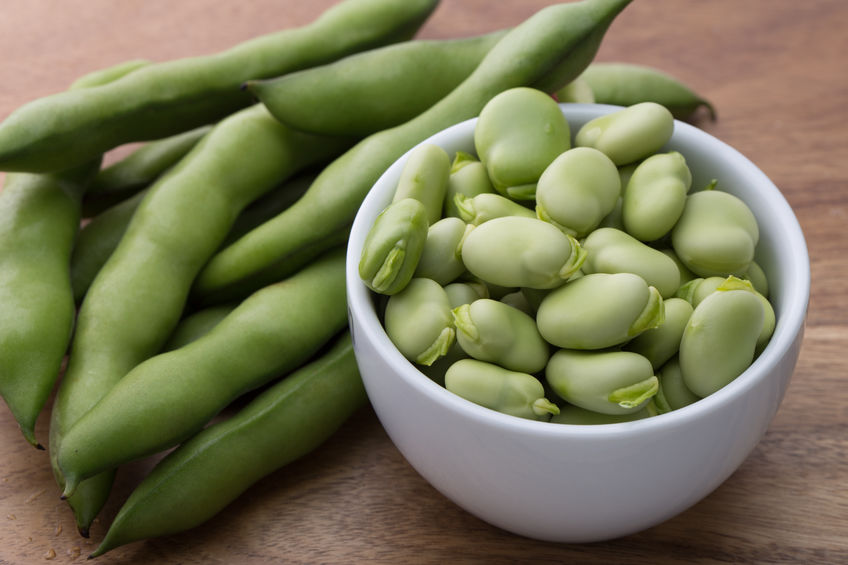Broad beans are one of the year’s easiest crops, not least because the seeds are large and easy to handle. There is no fiddling about with miniscule seeds and trying to sow them thinly, they can be handled individually. They are also delicious and crop at a time when there is little else to harvest.
The time of sowing depends partly on your location. In milder areas seeds can be sown in November or February to harvest around May. Such early sowings can help deter aphid infestations. This is not always possible in colder areas, or certainly the young plants would need the protection of cloches or fleece to prevent frosts causing plants to wilt and seldom recover. If in doubt you may be wise to sow seeds in February under cover in pots or cells and plant out in our milder spring climate. This is also preferable for those of us who have heavy soils such as clay which can cause directly sown seeds to rot. Otherwise seeds can be sown in the soil from March to May. This will provide a harvest in the summer months. If sowing in cold soils, it can be warmed by covering with polythenene. Choose a sunny site and one which is sheltered from wind to avoid wind damage to mature plants and encourage pollinating insects. Small, successive sowings ensure that a sudden glut of beans is avoided.
It is advisable to improve the soil with compost or manure, especially in heavier soils. The spacing of the seeds will depend on the variety, so consult the instructions on your seed packet. As a general rule seeds should be sown 5-7cm (2-3in) deep and 15-23cm (6-9in) apart. Closer spacing is possible if growing in containers using dwarfer varieties. If growing in containers, choose a deep pot to accomodate long tap roots.
It may be prudent to sow some extra seeds to fill gaps where seedlings have failed. Try to keep the area as weed free as possible. Watering should be carried out in dry spells, especially from the flowering period onwards. Taller varieties will require some support from string tied between stakes. Pinching of the tips will help pods to set. This should be done when small pods begin to form at the base of plants. The tender shoot tips are very attractive to aphids, so pinching will also help to avoid infestation. These young shoots are delicious steamed and buttered or used in pasta or risotto.
Once you can see the beans swelling in the pods it is time to harvest, starting with the lowest pods. If you wish to freeze the crop the beans should be blanched previously.
Fleecing will help to grow larger, stronger plants that are more immune to attacks of pea and bean weevil. Companion planting with herbs may help to distract or repel aphids if you wish to avoid use of pesticides. Treatment for fungal diseases such as chocolate spot and rust is not usually necessary as plants can usually withstand these problems. The use of purchased seed rather than seed saved from a previous crop helps to avoid problems with broad bean seed beetle. Keep an eye out for mice which can steal the seeds as they begin to germinate.
To view a selection of broad bean seeds at Suttons click here
To view a selection of broad bean seeds at Dobies click here
To view a selection of broad bean seeds at Thompson & Morgan click here
If you have enjoyed reading our blog post then why not fill in the form provided to allow us to send you our blog posts and newsletters by email.
Mark Snelling

